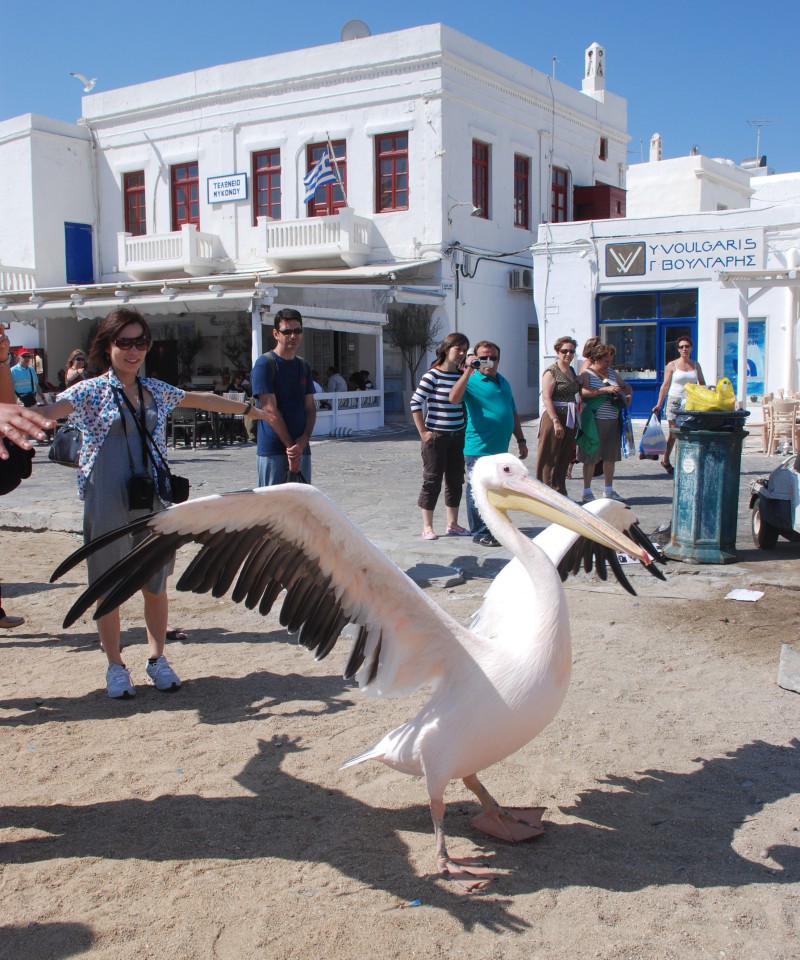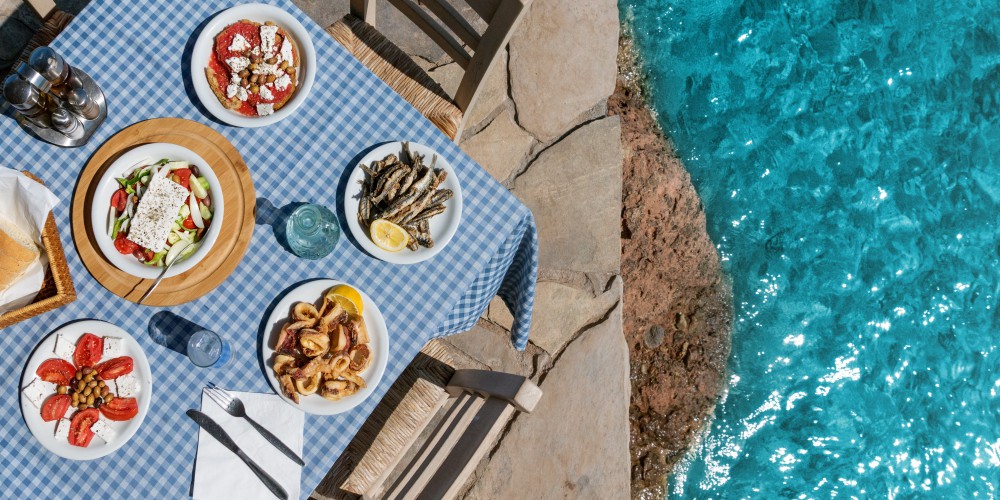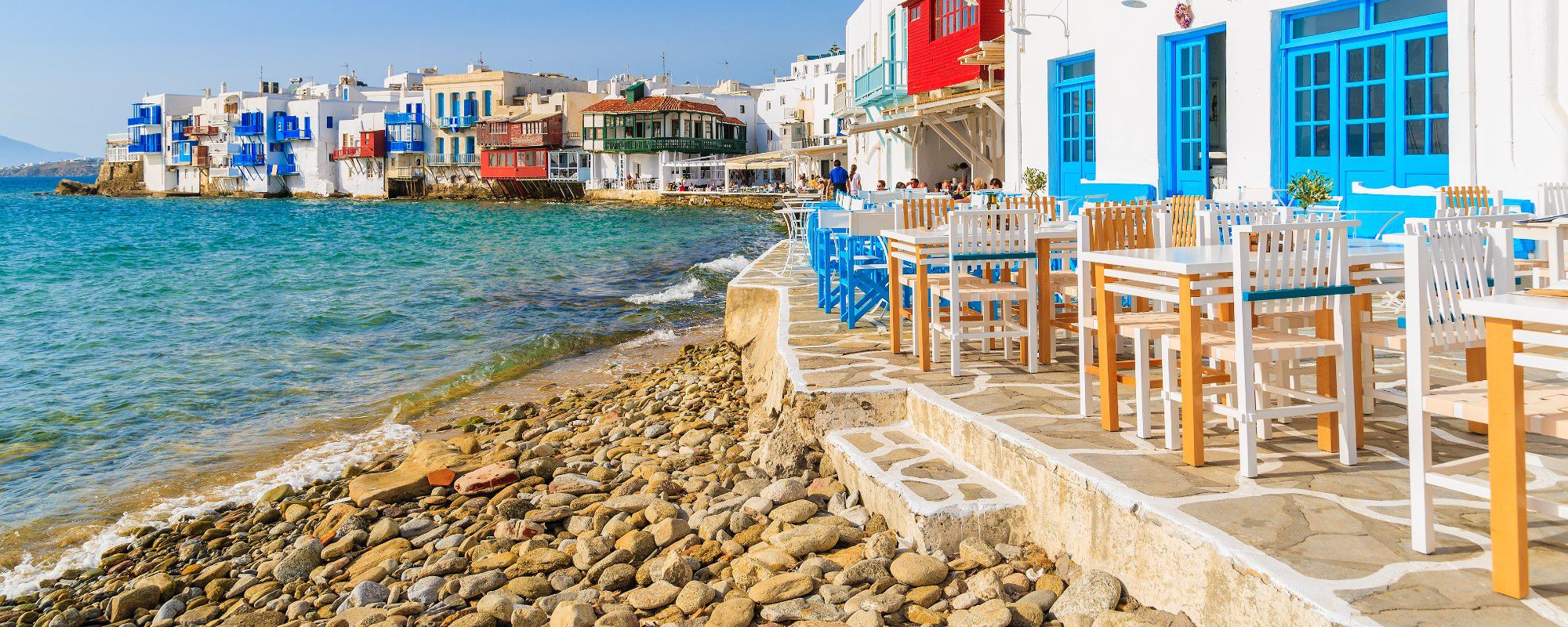
Mykonos Food Guide: Best Restaurants & What to Eat
Key Takeaways
- The local gastronomy of Mykonos features delectable products and age-old recipes that have been passed down through generations.
- Local products of Mykonos include sausages, kopanisti cheese, dipirites (barley rusks), tyrovolia (soft cheese), ksinotiro (sour-tasting cheese), louza (pork fillet), and more.
- Traditional savory dishes in Mykonos include mostra (barley rusks with kopanisti cheese), avgo ilios (scrambled eggs with tomato and lard), kollisianoi (fried mollusks), louvia (string beans), papa giahni (fish cooked with onion and tomato), and kremmidopita (onion pie).
- Mykonos has a small wine production, and visitors can try PGI Aegean wines made from local varieties such as Assyrtiko, Athiri, Monemvasia, and Mandilaria.
- Recommended restaurants in Mykonos include Baos Fine Dining, Kensho Psarou Beach Bar and Restaurant, Avli Tou Thodori, and NOA Greek Restaurant, offering a range of gourmet and authentic local dishes.
When someone arrives at Mykonos, its vibrant nightlife, a limitless supply of bars and clubs, and the wide selection of sparkling, sandy beaches are expected.
What you may not expect, however, are the culinary treasures that await hidden between the whitewashed, cobbled streets of the island.
Treasures that the Mykonian gastronomy lavishly offers to its locals and visitors consist of delectable local products and age-old recipes that have raised generations upon generations of Greeks.
If you want to experience the island from a local point of view, its cuisine is the way to go. With our Mykonos food guide, learn about the best products, dishes, and eateries on the island and get an overview of what to eat in Mykonos during your stay so you can satisfy your gastronomic needs as much as you’ll satisfy your partying needs!
After all, there nothing works up an appetite better than dancing!
Please keep in mind that fish and seafood are a staple in all of Greece and the Greek islands especially. Cooked in the oven, on the grill, or fried, plain fish and seafood are an integral part of the Mykonian diet and a weekly constant for most, and therefore, I won’t bore you with grilled fish fun facts; just know that fish and seafood are always an option.
Local products of Mykonos

As with all regions of Greece, Mykonos takes pride in its local products that comprise the ingredients used in its hundreds of mouthwatering culinary creations. From cheese to cold cuts, rusks, and more, here are the local products of Mykonos that will make you fall in love with its cuisine!
Mykonos’ sausages: Mykonos is famous for its incredible sausages that carry a distinct taste people go crazy for. Mykonos’ sausages are seasoned with Greek savory spice, also known as ‘throubi’ in Greek, spice, salt, oregano, and pepper, and are then left to air-dry.
They typically have a higher lean meat content than fat and are therefore considered to be the best-quality sausages out there. The traditional rustic sausages are one of the most popular ‘meze’ on the popular island, and locals love to accompany it with traditional ouzo or local wine.
Kopanisti: Kopanisti is officially recognized as a product of designation of origin, and although one can taste it on pretty much every island on the Cycladic complex, it is most often found and more commercially produced in the islands of Syros, Tinos, and Mykonos.
It is a soft fermented cheese with a strong peppery and spicy flavor. Depending on the place you get it from, kopanisti has many variations regarding its production.
In Mykonos, it is traditionally made from raw non-heat-treated cow milk -or a mixture of sheep, goat, and cow milk- curdled with natural rennet and drained into specially-made pouches.
It is then left to mature over a number of months before becoming available for general consumption. It is best served spread on freshly-baked bread. I mean, who doesn’t love cheese on bread?
Dipirites: Another outstanding "ambassador" of the authentic Mykonian taste are the barley rusks known as dipirites. These rusks -with different names- can be found all over Greece. In Mykonos, they have been accompanying Greek and foreign seafarers for years, as they can be preserved without losing their crispness and taste for prolonged periods of time.
Tyrovolia: Tyrovolia -or rovolia as it is often referred to- is another soft cheese and a trademark of Mykonos, while it is used in various recipes, such as the traditional onion pie with lard, the local honey pie, fried eggs, and stews, among others.
It is a fresh cheese that derives from the early stages of production of the aforementioned kopanisti cheese, however, unlike kopanisti, it’s not spicy.
Ksinotiro: A variation of the traditional -and famous- xinomizithra cheese, ksinotiro is left in the sun for far longer, something that gives it a much rougher texture than the typical xinomizitha.
As its name suggests -since ‘ksino’ means ‘sour’ in Greek- it is a sour-tasting cheese that is a derivative of sour milk that is squeezed into specially-made cheese baskets. When served fresh, it is pleasantly eaten as a table cheese. When served dry, it is ideal for pasta and all kinds of red sauces.
Louza: Made from local pork, louza is the leading Mykonian product one can savor in many variations. Traditionally, it comes from the part of the animal that gives the fillet.
The fillets are left in salt for 24 hours and then kneaded with plenty of spices, such as pepper, oregano, and Greek savory, in large quantities. After the kneading process, they are stuffed in the pig's large intestine, hung in the air, and matured over a 10-15 day period.
When louza is made of pork tenderloin, it is called a mpoumpoulo. The best way to eat the louza sausage is in very thin slices.
It does not need to be refrigerated, and the locals love to accompany it with the black sun-dried Mykonian grapes known as kountouras. It is served as a delectable appetizer on special occasions, as the fillet is one of the most expensive parts of the animal.
Traditional dishes: What to eat in Mykonos!
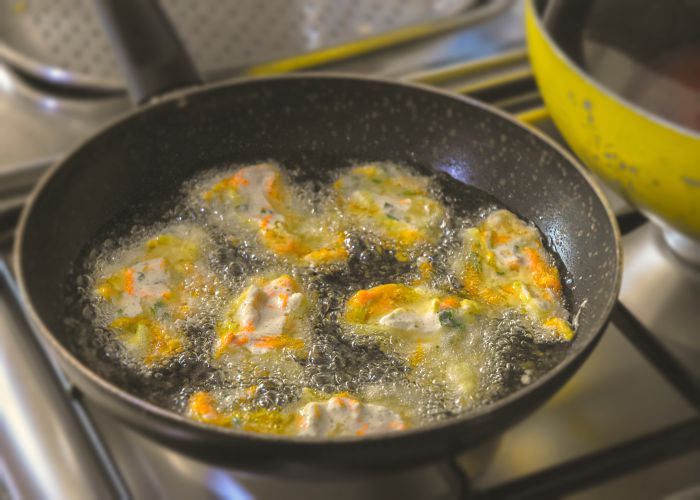
Home-cooked Mykonian dish - credits: Fortunato Violi/Shutterstock.com
As with any self-respecting region of Greece, Mykonos has its own selection of traditional dishes made with recipes that have been stan through the test of time.
Although everyone knows that a home-cooked meal is superior to all meals, Mykonos’ taverns are the next best thing. Here are the traditional recipes of Mykonos that are worth trying, divided into savory and sweet.
Savory
Mostra: Mosta is the easiest, quickest, most filling, and most glamorous meze in Mykonos. Quite a lot of adjectives there, right? That means you should not forget to order it! The recipe is simple, and it resembles the Cretan dakos found in southern Aegean.
The ingredients consist of barley rusks, kopanisti cheese spread, tomato, olive oil, oregano, and salt. Excellent in its simplicity, it is ideal for breakfast, lunch, or dinner -or all of the above!
Avgo ilios (sun egg): Despite its name, this Mykonian dish does not refer to eggs sunny side up but rather a scrambled eggs-type mixture that includes tomato, onions, and lard. It is close to the famous Greek egg dish of Kayianas, but with a Mykonian twist! Sometimes louza is also added, elevating this simple recipe to a whole other level!
Kollisianoi: Believe it or not, kollisianoi are the annoying mollusks found in the sea that are nicknamed ‘sea anemone’ and cause irritation upon skin contact. Regardless of their notoriety, the Mykonians carefully pick them, dip them in batter and fry them in olive oil, producing a delicious meze perfect for wine, ouzo, or other local spirits.
Louvia: A much more common dish -definitely not as extravagant as the previous one- louvia is what the locals of Mykonos call the thin string beans that are cooked on the stove and served with a special side of traditional garlic dip made with either bread or potatoes; a vegetarian option even non-vegetarians lust over!
Papa giahni: It is a fish dish that requires the fish to be cooked in a pot with plenty of onion and tomato. It is a simple and classic staple that can be found in many -if not all- Greek islands, and it is especially popular in Mykonos.
Provasia: also nicknamed ‘thalassogabros’ meaning ‘a groom from the sea,’ provasia is a basic green leaf dish of Myconian cuisine one can also find in Tinos and Syros. It is usually cooked alongside some type of meat and lard.
Kremmidopita: Onion pie made -yet again- with tyrovolia cheese. It is one of the most popular local pies -along with the sweet melopita that follows below- and it will change the way you view both onion and pies in the kitchen!
Sweet
Melopita: One of the most popular pies on the island, it is essentially, a large sweet-tart, made with the aforementioned fresh tyrovolia cheese, plenty of honey, and cinnamon. It is way better and more nutritious than cheesecake, and everyone with a sweet tooth ought to try it when given the chance!
Kalathakia amygdalou: Small baskets made of flour and butter stuffed with a mixture of almonds, sugar, walnuts, eggs, cinnamon, and cloves. Talk about a dream combo!
Tiganites gries: Although in Greek, the name of the dish literally translates to ‘elderly pancakes, ’ the taste is anything but dusty, crusty, and boring.
It is a simple dessert made from leftover pie dough, and it tastes very similar to pancakes. It is traditionally drenched in sugar, cinnamon, and honey -Mykonians seem to love this blend!- and although plain and easy, it is unexpectedly delicious.
Tsibita: Sweet little cheese pies made with -you guessed it- tyrovolia cheese, flavored with orange and cinnamon and drenched in honey. Tsibita are one of my personal favorites, so make sure to trust me on this one and choose it as your afternoon snack after a long day of sunbathing. I just painted the perfect picture; I know I did.
Amygdalota: These are sweets made of grated almonds. They are specifically found throughout the Aegean but are more closely associated with the Cyclades.
They are prepared in different ways according to the traditions of the island, but in Mykonos, they are formed in a narrow shape, baked in the oven, and covered with loads of powdered sugar.
Mykonos’ wines
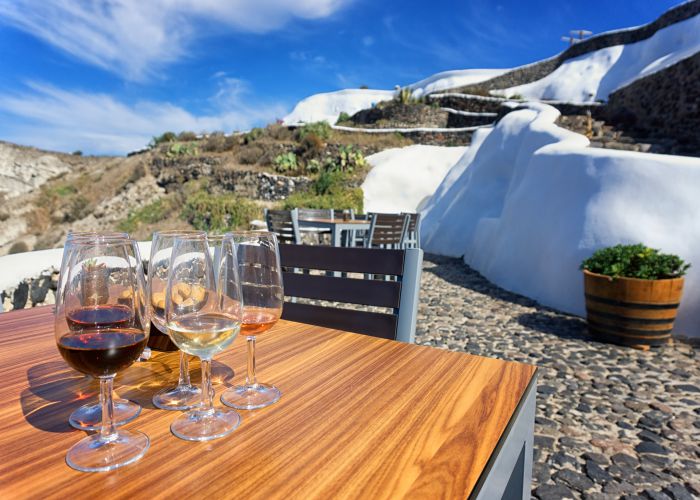
In the cosmopolitan Mykonos, although there are less than a few, you can find some of the most expensive vineyards. Mainly in the region of Marathi and in the Monastery of Panagia Tourliani in Ano Mera, the Aegean varieties Assyrtiko, Athiri, Monemvasia, Mandilaria produce white, rosé, and red PGI Aegean wines.
Vine growing has flourished in Mykonos since ancient times. However, over time, various circumstances have largely halted wine-growing production, with war, migration, and, finally, the big waves of mass tourism being the most notable ones.
Today, on the most celebrated island in the country, vine growing and wine production are not among the most popular activities, regardless of the huge amounts of money spent by the tourists on champagne and rare wines during the summer months at the island's renowned beach bars and restaurants.
Only two wine production attempts have been recorded on the island in recent years. The first attempt comes from a large estate based in northern Greece, while the second one is a small personal effort by dentist George Xydakis.
With his family farm as the base, Xydakis cultivates local varieties such as Pariano, Koundoura, Serfiotiko, White, and Black Potamisi but also the extremely rare: Black Ashkatharia, Agianniotiko, Kouforgogo, and Xeromahaleousi.
Despite being an amateur’s effort, his rare bottles are the topic of discussion between wine producers and sommeliers in Greece. Mykonos' other winemaking project is set up by Château Nico Lazaridi, the company that laid the foundations of viticulture in the prefecture of Drama and has become one of the most significant wineries in Greece.
The established estate built a modern winery called 'Mykonos Vineyards SA’ in the village of Ano Mera in Mykonos.
In spite of the small wine production, during your stay in Mykonos, you’ll have the opportunity to accompany your nights or meals with delectable wine offerings from Mykonos, Greece, and all over the world.
Look for the indigenous labels and treat yourself to a glass of crisp, refreshing wine that will serve as a cure for the summer heat.
Suggested Mykonos' Restaurants
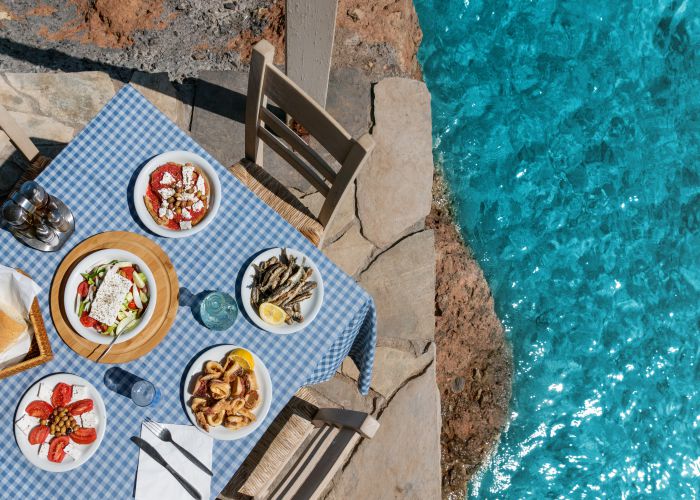
Granted that Mykonos is hands down one of the most visited destinations of Greece, with its popularity only rising year after year, there are more than plenty of eating establishments that promise an authentic Mykonian gastronomic experience to the visitors.
If you’re in search of a fine-dining experience, Baos Fine Dining is the ultimate destination, Having been awarded several awards since its establishment, its gourmet dishes satisfy even the most demanding of foodies.
The restaurant puts a contemporary spin on trusty age-old local recipes and aims to promote the flavors of Mykonos cuisine through creative dishes that combine fresh ideas with fresh ingredients.
Try the fresh lobster served with bulgur wheat, truffle oil, cauliflower sauce, lobster jus, and mushrooms, and you’ll be left speechless. Baos offers a number of delectable vegetarian options, so make sure to give those a try as well; even if you don’t have specific dietary needs, they are still delightful.
In a similar price range, Kensho Psarou Beach Bar and Restaurant, with a number of awards in its pocket, offers a once-in-a-lifetime culinary experience that, if your budget allows you to, you should make a point of trying.
For top-quality gourmet comfort food, try the smoked beef tartare consisting of Black Angus beef fillet, egg yolk jam, pickled mustard seeds, and radish. My mouth waters just thinking about it.
For authentic local flavors and more moderate prices, Avli Tou Thodori is the real deal. On its menu, one can find common delicacies that are cooked to perfection using fresh, local materials.
From the saganaki cheese with caramelized figs and nuts to the grilled Kalamari with tomato, finocchio, and eggplant dip, and everything in between. The mind-blowing flavors you will taste will get engraved in your memory.
Far from the steep prices of Baos but still quite glamorous, NOA Greek Restaurant ‘combines culinary heritage and contemporary innovation to create a journey in Mediterranean gastronomy.’
Its menu consists of all the traditional flavors one can possibly want, and my top picks are the ‘trio of Greek dips’ that includes tzatziki, spicy cheese dip, and fish roe salad or ‘tarama,’ along with its cult-classic mousaka that I’ve found to be the closest thing to authentic homemade mousaka out there.
Last but not least, for either breakfast, brunch, or a mouthwatering dessert that will give a sweet spin on your vacations, Lalala gives you the opportunity to indulge yourself in luscious treats that their incredible taste leaves no room for guilt. Make sure to order their fluffy pancakes with a topping of your choosing and board the train to yummyville!
Final Thoughts
In the quest of gathering solid advice for your trip to Greece, you’ve probably already google-searched for ‘what to do in Mykonos,’ ‘what to wear in Mykonos’ or ‘where to stay in Mykonos.’
Well, now you can cross off your ‘to-do’ list by googling ‘what to eat in Mykonos’ as I’ve just provided you with a comprehensive guide that will ensure you explore the flavors in Mykonos like a pro, or even better, like a local!






